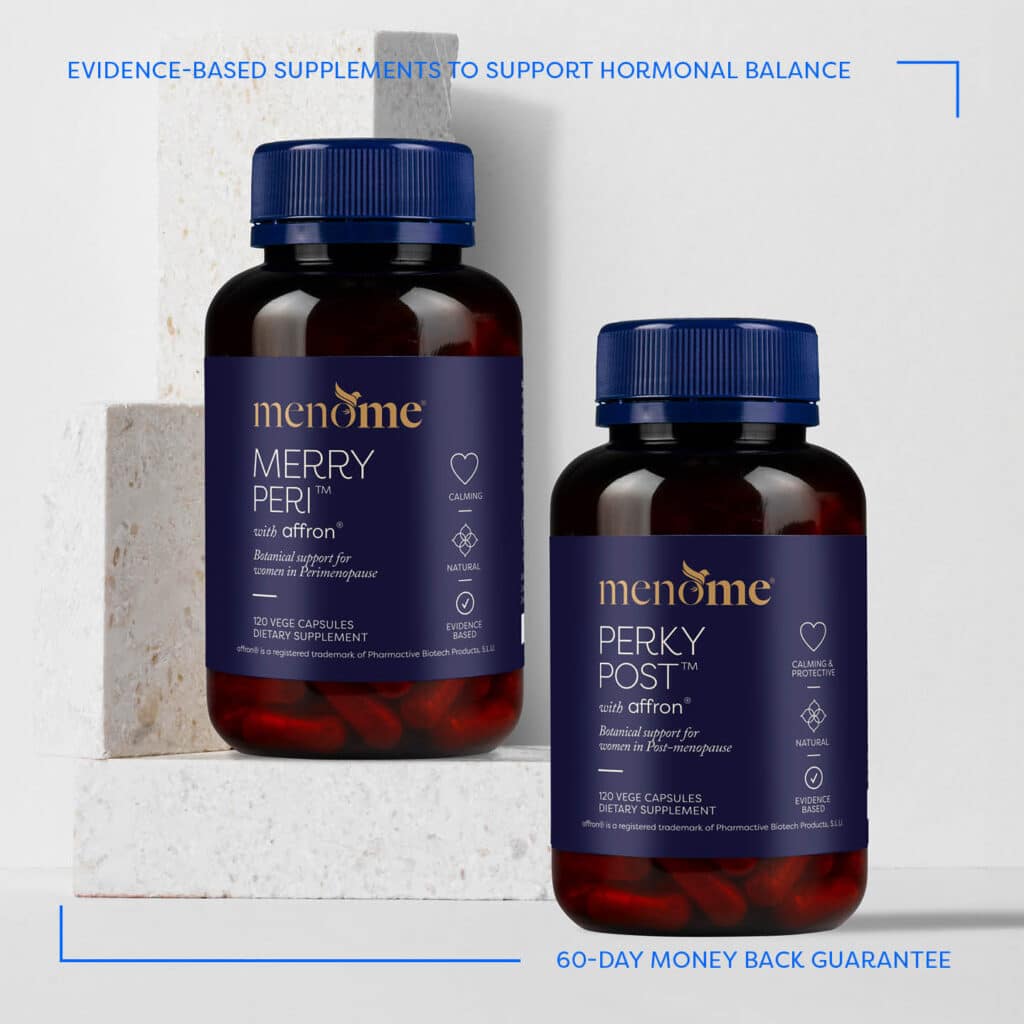Recipe: 3 Infused Water Thirst Quenchers
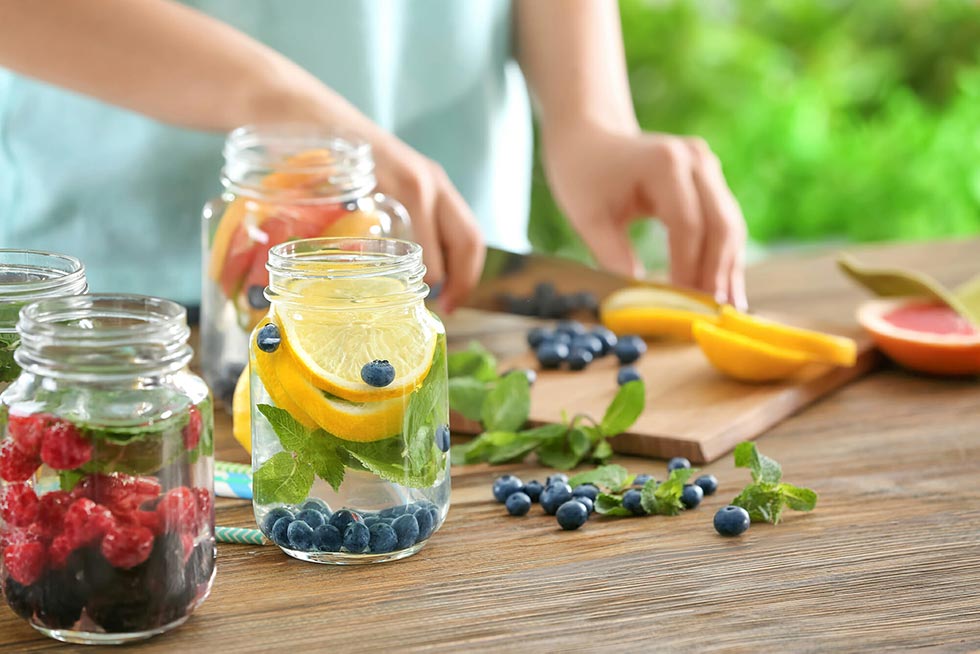
Infused water? Really?
Oh, yes indeed – it’s great. And we’re serving these up because hydration is one of the keys to happy, healthy hormones, gut and weight.
What’s more, our natural water volume goes down as we age so we need to sup it up buttercup!
Because water is essential to practically every bodily process.
It also helps with constipation, bloating, headaches, migraines, brain fog and concentration.
One thing’s for sure, a good dose of H20 will definitely kick start your day in the best possible way.
Water facts
- The human body is approximately 2/3 water.
- The human brain is approximately ¾ water.
- Our blood is about 85% water.
- We lose about 2.5 to 3 litres of water daily via perspiration (hey, we don’t sweat we sparkle!), breathing and going to the loo.
Tips for drinking
1. As wingwomen for getting you through your peri/menopause years in as good a shape as possible, we suggest drinking a litre or two a day*.
* amounts vary according to your level of activity and the heat of the day; more sweat more water.
2. Sip don’t gulp. Sipping gives the body more time to assimilate the water – gulping may just send you running to the loo more often.
3. Don’t drink with meals. Drinking with meals dilutes your stomach acid and quite a few of us (including me) have underperforming stomach acid. It’s a midlife thing.
A special note re sparkling water.
Sparkling water doesn’t equate to your one litre on the daily.
I know, I know, I love it too. But just so you know it’s quite acidic. We need to drink the plain stuff because it has a pH of about 7-7.5 which is easy on the body. Sparkling has a pH of 3-4 so the body has to work harder to process it. Go ahead and have a glass (phew!) but only one and don’t include it in your daily water quota.
Lemon water
Lemon water is pretty well known and loved for its ability to help to alkalise the body and offer up some electrolytes which help to enhance hydration. Half a lemon squeezed into warm water is a brilliant way to begin the day. I add cinnamon and ginger to mine as well.
Water & weight loss
Drinking water has long been associated with weight loss and there are numerous studies out there showing that it helps with the journey. Here’s one fyi.
Water helps with weight loss by:
- Reducing appetite.
- Studies show increased energy output (more kgs/cals burned).
- Less kg/calories consumed.
So that was the good news and the bad news.
But there’s more good news. The following delicious infused water recipes will help you change up your plain water when you want some extra oomph. Filtered water is best but if you don’t have it go with what you’ve got. Keep it simple.
3 Infused water recipes to love
What is infused water?
A type of water that includes fruits, vegetables and herbs for added flavour. It’s super easy to make and delicious.
1. Apple and Cinnamon
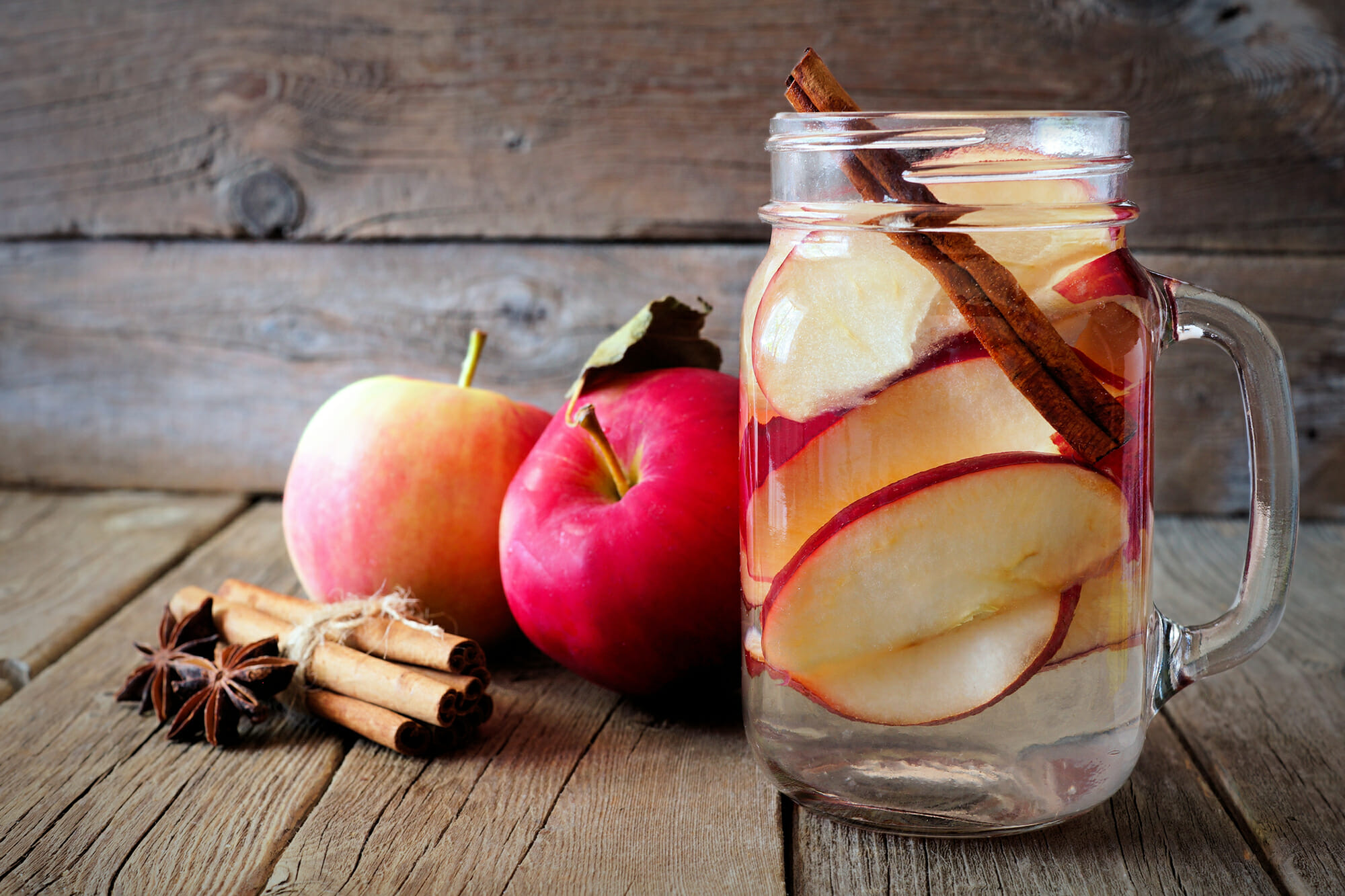
Apples and cinnamon are oh-so-tasty. Make this infused water the night before, and keep a jug of it in the fridge. All you need to do is add some sliced apples to the bottom of the jug/carafe (no seeds) and add one cinnamon stick.
Cinnamon can help lower blood sugar levels and enhance insulin sensitivity. This is a win for meno’s who can often struggle with weight gain due to insulin resistance.
Study: https://jandonline.org/article/S2212-2672(12)01349-4/fulltext
2. Berry and Lemon
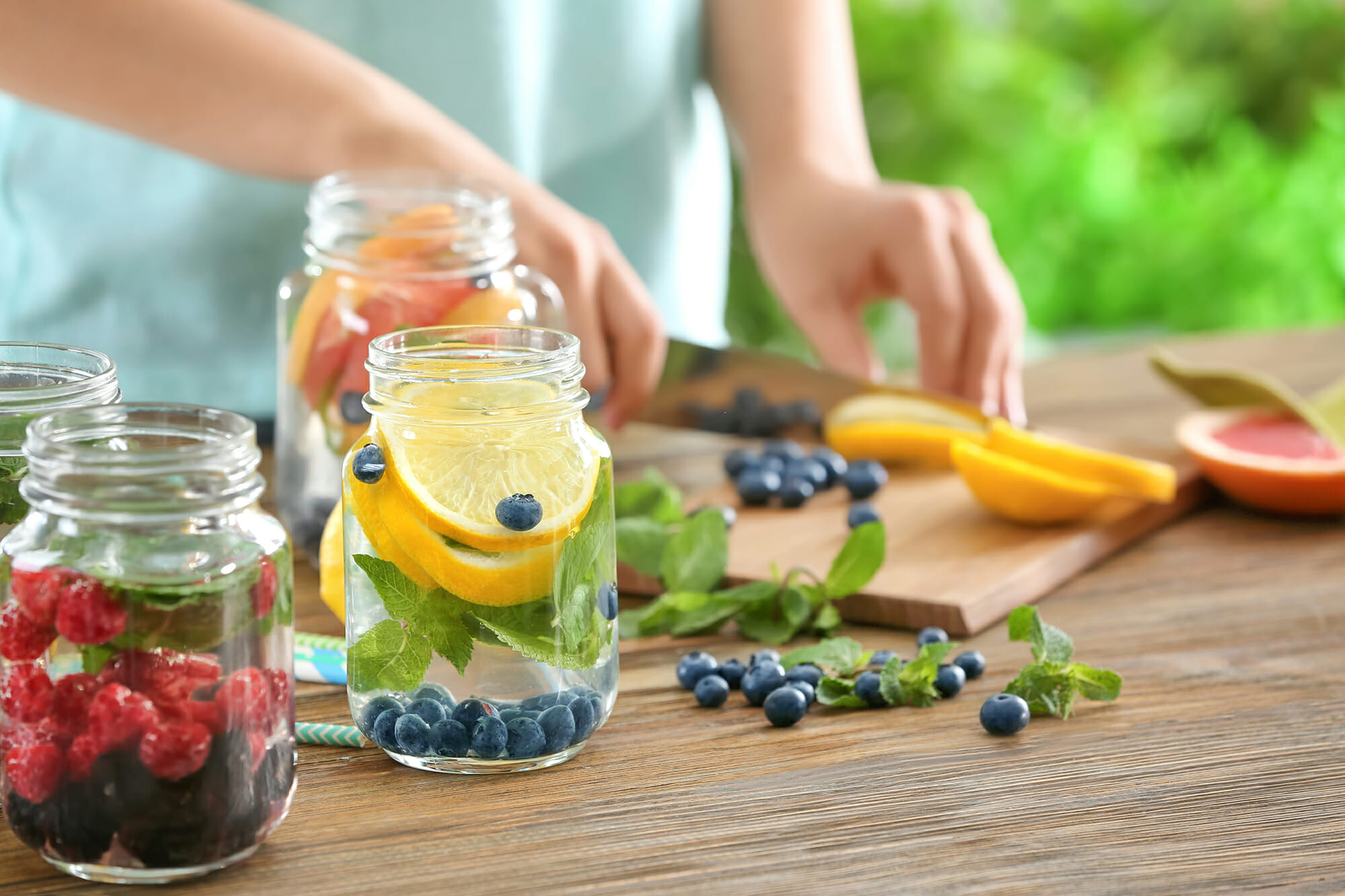
For this infused water, you can use any berries you want. Most berries contain loads of antioxidants – check out their antioxidant-rich colours! Our bodies, brain and skin love them. Try blueberries, strawberries, raspberries, blackberries, whatever floats your boat. Pop your berries at the bottom of a jug/carafe, and add some lemon slices. Fill with water and leave in the fridge overnight.
Tip: When you’re ready to drink add some ice on top of the fruit to release the flavours and keep the water nice and cold.
Berries provide us with fibre (a must for weight management) and are little superpowers of health helping our heart, oxidative stress (think of a rusty car, that’s what oxidative stress does to our bodies), and inflammatory markers.
Study: https://www.ncbi.nlm.nih.gov/pubmed/23319811
Study: https://www.ncbi.nlm.nih.gov/pubmed/22068016
Watermelon and Mint
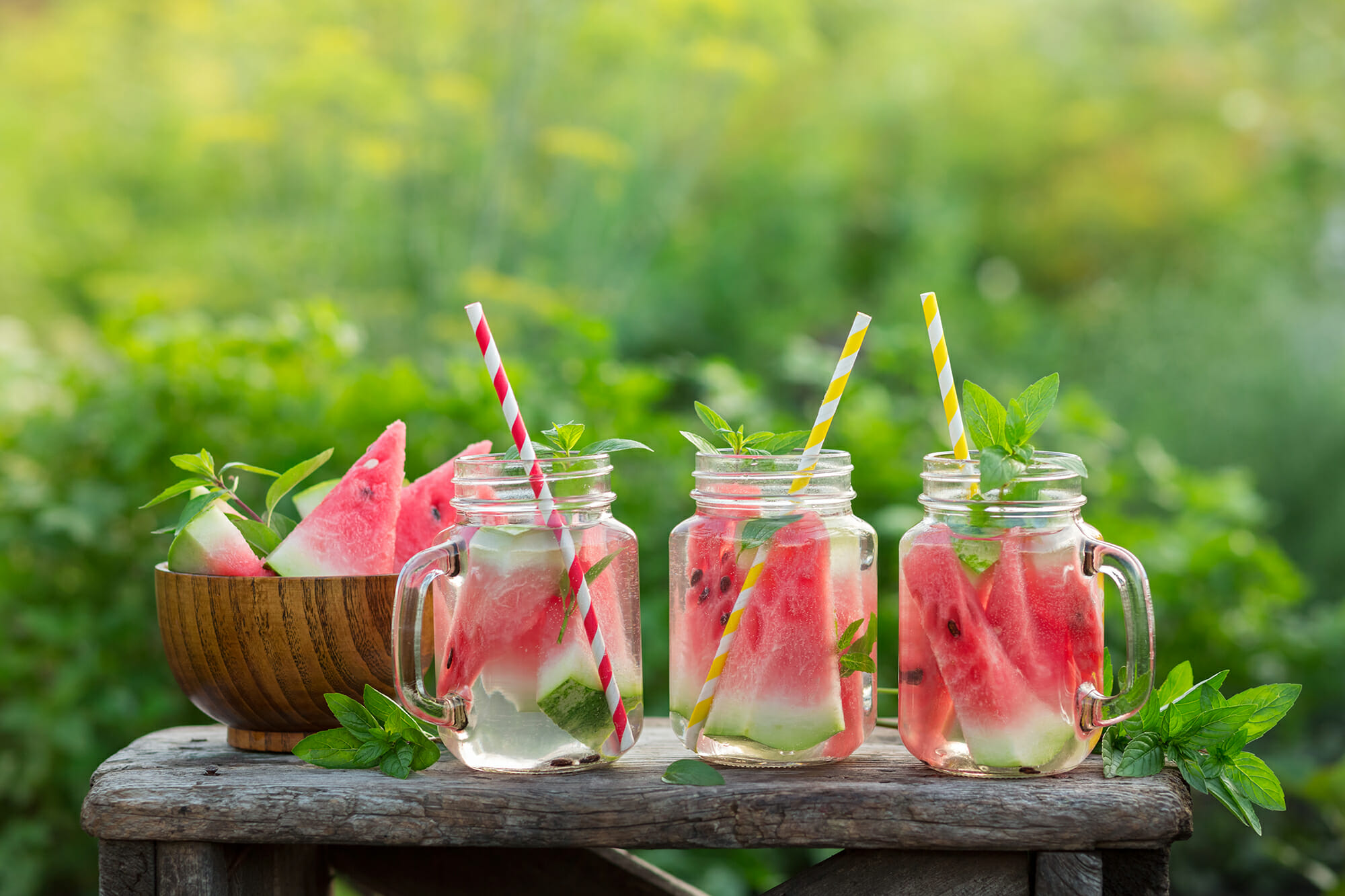
Many infused waters also contain herbs, which provide more flavour and nutrients at the same time. This recipe is super simple and super delish and loaded with watermelon slices and mint leaves. Try to use a seedless watermelon (if you can find one!), and use slices that don’t have a lot of rind on them. Add some muddled mint at the bottom, cover with ice, fill with water.
We already know watermelon is refreshing and delicious. It also gives us a dose of vitamin A, C, B vitamins and the wonderful carotenoid/antioxidant lycopene which Meno-She’s need oodles of!
Study: https://www.sciencedirect.com/science/article/pii/S0889157511001049
Mint’s a little dynamo in terms of a flavour punch! It’s also rich in vitamin A which is great for eye health and is rich in antioxidants to guard against oxidative stress.
Study: https://www.ncbi.nlm.nih.gov/pubmed/16190627
There are many more flavours you can add, the world is your oyster. What about cucumber and mint or pineapple and basil? Yum.
Tip: freeze your infused waters and give them a quick whizz in the blender to make a granita. Voila! Summer Mocktails.
Cheers

